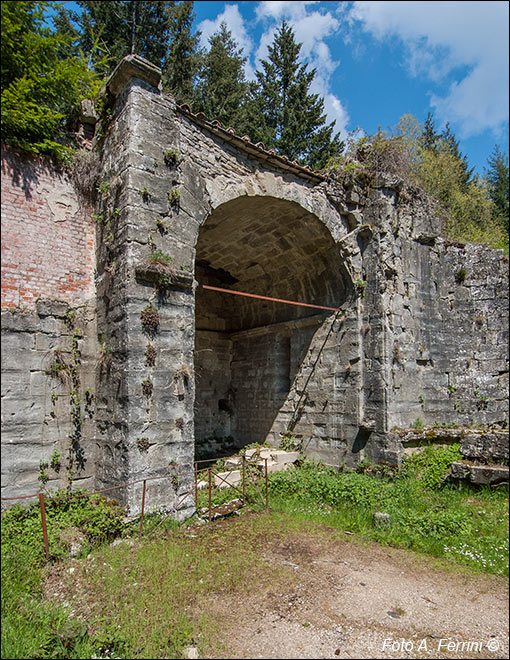Con Guido Monaco all'Abbazia di Santa Trinita
itinerario da Pontenano all'abbazia benedettina di Santa Trinita e al Varco di Anciolina
Italiano
STRADE E LUOGHI STORICI SUL PRATOMAGNO 35
Il transetto di sinistra dell'Abbazia di Santa Trinita. Lo stile di questo elemento architettonico è da datarsi attorno alla fine dell'XI secolo, quindi almeno un centinaio di anni dopo rispetto al capitello osservato nella cripta (pagina precedente).
Il periodo tra la fine del X secolo agli anni ottanta del XII fu il momento di maggior magnificenza di Santa Trinita che ebbe i suoi maggiori interessi economici, politici e religiosi nel Valdarno. All'abbazia erano sottoposte la Chiesa di San Michele ad Anciolina, la Pieve di Santa Maria a Scò, la Badia di Soffena, I monaci di Santa Trinita erano proprietari di molti terreni agricoli in questa valle e intorno al 1010 costruirono l'Eremo di Gastra a controllo dell'importante percorso che, attraversando la parte nord del Pratomagno, collegava la Pieve di Santa Maria a Scò con la Pieve di San Martino in Terdinula presso l'attuale Strada in Casentino. Alla fine del XII secolo, però, Santa Trinita aveva già perso questi beni a favore di Vallombrosa e di altre entità religiose che avevano l'appoggio politico di Firenze.
The left transept of the Abbey of Santa Trinita. The style of this architectural element can be dated around the end of the 11th century, therefore at least a hundred years later than the capital observed in the crypt (previous page).
The period between the end of the 10th century and the 1180s was the moment of greatest magnificence of Santa Trinita which had its greatest economic, political and religious interests in the Valdarno. The Church of San Michele ad Anciolina, the Parish Church of Santa Maria a Scò, the Badia di Soffena were subject to the abbey. The monks of Santa Trinita were owners of many agricultural lands in this valley and around 1010 they built the Hermitage of Gastra to control the important route which, crossing the northern part of Pratomagno, connected the Parish Church of Santa Maria a Scò with the Parish Church of San Martino in Terdinula at the current Strada in Casentino. At the end of the 12th century, however, Santa Trinita had already lost these assets to Vallombrosa and other religious entities that had the political support of Florence.













































































